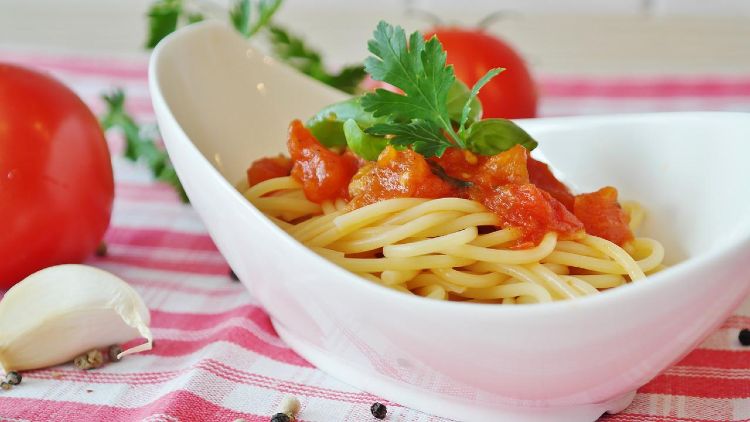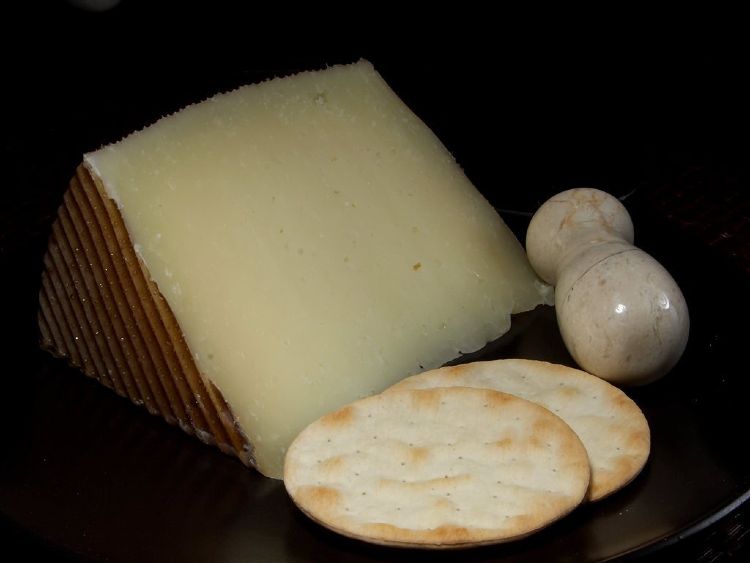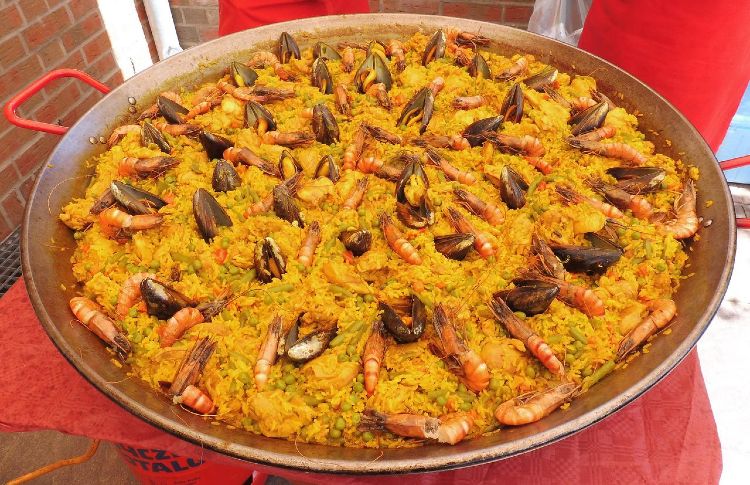The High Priestess of Pasta, “La Sfoglina”
Bologna does has a football squad of sorts but the only team that really counts in this food-mad city is the one at your favourite trattoria. And the key player there, though often invisible, is what makes a restaurant’s reputation: the sfoglina, or pasta maker, so called because she makes the pasta sheets or foglio.
Although the artisan tradition has largely given way to machine made pasta, some restaurants, bastions of tradition, have a special workshop called a laboratorio where pasta is made. And presiding over it is the sfoglina. Every February, the city’s best sfogline compete for the title of Matterello d’Oro, the Golden Rolling Pin, a competition lovingly covered by the local media.
Bolognese housewives used to make fresh pasta with eggs every day. Those days are long gone, but Bolognese still crave pasta like nonna’s or mama’s. A big family Sunday lunch without home made pasta is unthinkable. Of course, egg pasta is not exclusive to Bolognese cookery but it is essential to it in a way that is not true of the other places where it is also popular, such as Venice. It is used to make the noodles or tagliatelle which accompany the famous Bolognese meat sauce, the ragù. It is also used to make stuffed pasta, especially tortellini, the little meat-filled parcels that are the highlight of Christmas Eve supper and celebrations such as weddings and communions. The meatless versions are called tortelloni or tortelli or tortellaci. Egg pasta is also used to make the small sheets of pasta which go into that other Bolognese must-eat, lasagne.
Popularly invested with semi-magical powers, the sfogline carry on the skills of their trade from generation to generation. The wrinkled old lady who used to sit at the entrance to the trattoria, patiently and expertly making stuffed pasta, like the one I remember in Lagune, up in the hills near Sasso Marconi, is no more, alas, and most people these days buy their pasta from their favourite pasticceria (which also sells pastries and sweets) or the supermarket.
One place that still has a sfoglina is Anna Maria, a restaurant in the centre of Bologna, a favourite with audiences, performers and the orchestra from the Teatro Comunale nearby. Just down the street, behind an anonymous shop front, is the lab. where Nicoletta Bussolari makes egg pasta for the restaurant. She tells us, ‘It’s a creative thing. I feel a lot of passion for making pasta. Very simple, just eggs and flour’.
Around the corner is another laboratorio run by Osteria dell Orsa where you can buy tagliatelle, tortellini and tortelloni, and see it being made. We watched as Roberto Gasperini— a rare male sfoglino — and Ornella Visentini rapidly made a batch of tortellini. ‘And what is the filling for this half-moon shaped pasta?, we wanted to know. ‘Ah, that’s a special one, just for the Osteria’, replied Roberto, and he paused, ‘But if you come back at lunchtime I’ll make sure there’s some set aside for you.’ And he did.
Nicoletta makes the whole process look very easy. First, you measure out the flour, which must be pasta flour, marked OO on the package. The rule of thumb is 100g of pasta per person, and one medium sized egg per 100g. All the sfogline, and the authorities on Bolognese cooking, are united on this whereas Locatelli and the River Cafe folk use vast quantities of additional egg yolks. Funnily enough, we cannot detect any difference in the outcome. Both work.
Second, you amalgamate the flour and the eggs to make a smooth dough. Traditionally this is done by creating a depression — fontana as they call it – in a pile of flour and breaking the eggs into it, then mixing with the hands. The next step is to knead the pasta on a floured board by pushing it away from you with the heel of your palms, folding it over, and pushing it away again, until the pasta loses its stickiness and becomes elastic. You can do all this using a food mixer. Don’t begrudge this part of the process; it produces pasta that is more easily worked and doesn’t stick. Then, wrap it in cling film and leave it to rest for an hour.
Now you roll it out. Sfogline use a matterello, a rolling pin 70 cm. long but you can use an ordinary pastry rolling pin. Or you can use a domestic pasta machine. Don’t skimp on the number of times you feed the pasta through the machine. Three or four times at each width setting will produce smoother, silkier pasta.
Observing is one thing, doing is another, so if you are keen to make your own pasta you should sign up for a lesson from a sfoglina. We had a morning with Aurelia, who makes pasta every week for La Locanda del Castello. As Ruth remarked, ‘she turned our pasta skills from pitiful to hopeful and we had a very nice time at it.’ I’ll let Ruth take over.
First the flour, so important we are told for perfect pasta that holds the yellow colour of the yolks even after drying and cooking. It must be perfectly white, any dark particles in the flour turn to unappetising grey once you roll. Next the eggs which are typically Italian with deep orange yolks. That’s it. The rest is technique, muscle power and the weather. Dry days require more egg; wet days, rather less. Aurelia warns us not to skimp on the kneading whatever we do. Ten or fifteen minutes will be needed to achieve the elasticity that makes it easier to roll without constantly adding flour.
The sfoglina’s art isn’t a quick win. Aurelia learnt at her nonna’s knee and has been making pasta for 40 years. Years that have taught her some handy tricks that we hadn’t seen in the books:
- letting a little of the dough hang over the side of the board and clamping this with the pressure of your clean, aproned stomach to grasp the dough and allow you to stretch it out;
- the breast stroke action of the pin, pushing upwards and outwards from the centre with gentle but insistent movements;
- lightly rolling the pin over the dough twice each time you move the dough around to push out all the air from underneath and prevent tearing.
The Bolognese say that your sfolgia (dough) is good if you can see the outline of the San Luca church through it. Now it can either be left to dry for 30 minutes or so then rolled and sliced into beautiful yellow tagliatelli — 6-8mm wide – bundles. Or cut into lots of squares for tortelloni or tinier squares or circles for tortellini. If you are making stuffed pasta, don’t let it go dry, otherwise it will be difficult to seal the edges together, so keep it covered under clingfilm until needed.
One final tip – mine – is that as always with matters of technique, practice makes perfect. Keep trying.
Martin’s Blog: www.tasteforbologna.blogspot.com



